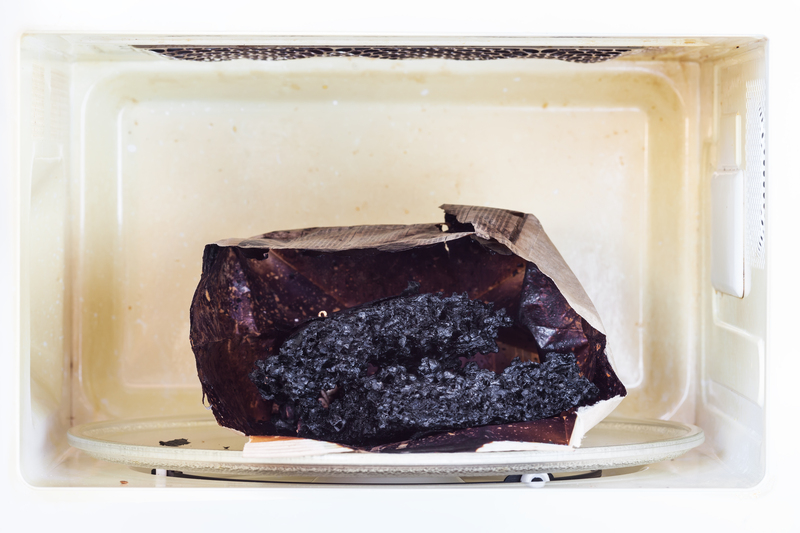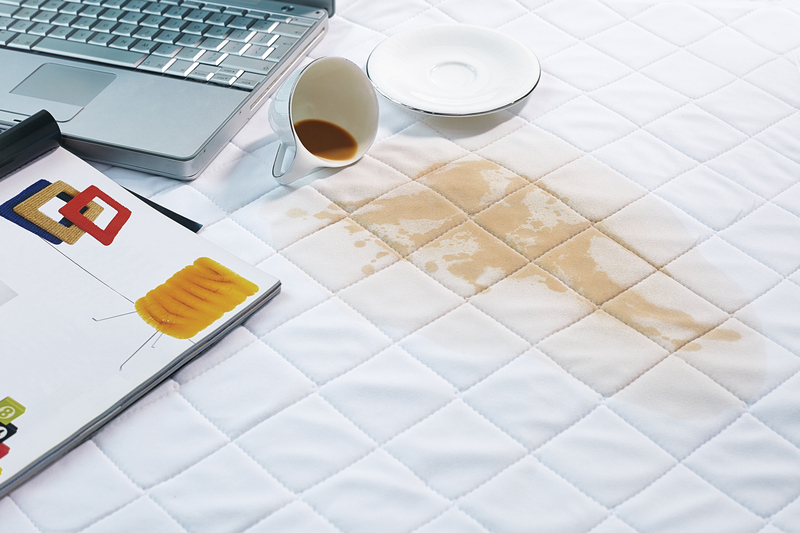Essential Tips for Washing Velvet Curtains Safely
Posted on 02/06/2025
Essential Tips for Washing Velvet Curtains Safely
Velvet exudes luxury, elegance, and classic charm, making it a popular choice for curtains in stylish homes. However, many homeowners feel intimidated at the thought of cleaning velvet curtains, worrying that they might ruin the plush texture or vibrant color. Fortunately, with the correct knowledge and careful technique, you can revive the beauty of your velvet drapes without damage. In this comprehensive guide, we'll uncover all the essential tips for washing velvet curtains safely, ensuring they stay stunning for years to come.

Understanding Velvet and Its Unique Cleaning Needs
Before diving into the best practices for washing velvet curtains, let's first understand what makes velvet unique.
What Is Velvet?
Velvet is a woven fabric characterized by its short, dense pile that creates a soft, luxurious surface. It can be crafted from cotton, silk, polyester, or other synthetic blends. The delicate nature of velvet, especially the pile or nap, means it requires special care--much different from regular fabrics.
Why Is Washing Velvet Curtains Tricky?
- Water Sensitivity: Some velvet fabrics, especially those made from silk, can be easily damaged by water.
- Texture Preservation: The pile can become crushed or lose its lush texture if handled incorrectly during the cleaning process.
- Color Bleeding and Fading: Velvet, especially dark or vibrant colors, can bleed or fade with improper washing techniques or harsh detergents.
Knowing your type of velvet is the first step to safe cleaning.
Step 1: Identify the Type of Velvet
Different velvet types demand different cleaning methods. Before proceeding, check the care label on your curtains for manufacturer instructions. The most common velvet types are:
- Cotton Velvet: More durable, can sometimes be hand-washed but requires caution.
- Silk Velvet: Extremely delicate--best left to professional dry cleaners.
- Synthetic Velvet (Polyester, Rayon, etc.): Often more resilient and may be hand- or even machine-washable on gentle cycles.
If your velvet curtains do not have a care label, perform a spot test (explained later in this article) before attempting any cleaning.
Step 2: Regular Maintenance and Dust Removal
Routine Velvet Curtain Care
To extend the period between full washes, focus on regular maintenance:
- Vacuuming: Use a soft-brush vacuum attachment weekly to gently remove dust and prevent dirt from embedding in the velvet pile. Always vacuum in the direction of the pile.
- Lint Rolling: Use a lint roller or a soft clothes brush to keep your curtains free from pet hair and surface debris.
- Avoid Compression: Ensure curtains aren't pressed against walls or window frames for long periods to prevent pile crushing.
Step 3: Spot Cleaning Stains
If your velvet drapes only have isolated stains or marks, spot cleaning is the safest method.
How to Spot Clean Velvet Curtains
- Blot, Don't Rub: If the stain is fresh, immediately blot the area with a clean, dry cloth to absorb excess liquid. Never rub, as this can damage the pile.
- Prepare a Mild Solution: Mix lukewarm water with a small amount of gentle liquid detergent (preferably wool or delicate fabric detergent).
- Spot Test First: Always test a small, hidden area to check for colorfastness.
- Gently Dab: Dampen a clean, colorless cloth with the solution and dab the stain gently. Rinse the area with another clean, damp cloth.
- Dry Properly: Use a dry, absorbent towel to blot excess moisture, and allow the area to air dry.
Tip: For oil-based stains, sprinkle a little cornstarch or baking soda on the area, let it sit for 30 minutes to absorb oil, then brush or vacuum off before spot cleaning.
Step 4: Hand Washing Velvet Curtains
If your fabric and care label permit, hand washing velvet curtains is the safest full-wash method.
Steps for Hand Washing Velvet Curtains
- Fill a Tub: Use a bathtub or large basin with lukewarm water. Add a small amount of gentle, dye-free detergent.
- Submerge Curtains: Gently swish the curtains to clean without wringing, twisting, or scrubbing hard. Handle with care to prevent pile distortion.
- Soak Briefly: Allow to soak for 5-10 minutes. Do not leave velvet in water for prolonged periods, as excessive soaking can deform the pile.
- Rinse Thoroughly: Drain and refill the tub with clean, cool water. Gently move the curtains to rinse any detergent residue.
- Blot Excess Water: Lay the curtains flat on a large, absorbent towel and roll up to press out water. Avoid twisting.
Never wring or twist velvet, as this can cause permanent creases or damage the plush surface.
Step 5: Machine Washing Synthetic Velvet Curtains
Some synthetic velvets (especially polyester or polyester blends) can be machine washed. Always check your care instructions and proceed with caution:
- Use a Large Capacity Washer: Curtains need room to move freely without getting crushed.
- Gentle Cycle & Cold Water: Select delicate or hand wash cycle and use cold water only.
- Mesh Laundry Bag: Place curtains in a large mesh bag to prevent snags.
- Mild Detergent: Only use small amounts of gentle detergent to avoid product buildup.
- No Fabric Softener: Fabric softeners may leave residue and affect the pile.
Note: Machine washing is generally not recommended for cotton or silk velvet. When in doubt, choose hand washing or professional cleaning for peace of mind.
Step 6: Drying Velvet Curtains Properly
How you dry your velvet curtains is just as important as how you wash them. Improper drying can crush the pile or cause shrinkage.
The Best Way to Dry Velvet Curtains
- Lay Flat to Dry: After blotting, spread the curtains flat on a dry towel in a single layer. Keep them out of direct sunlight to prevent fading.
- Hang to Finish Drying: Once most moisture is absorbed, hang them on a sturdy rod, using ample space to ensure air circulation and avoid wrinkles.
- No Tumble Dryer: Velvet should not be tumble dried--heat and agitation can ruin the fabric.
- No Direct Heat: Avoid radiators, hair dryers, or direct heaters.
Smooth the fabric gently with your hands as it dries to help restore its pile.
Step 7: Restoring Velvet Pile After Washing
Sometimes, even with the safest washing, the velvet pile may look flattened or dull. Here's how to revive its natural luster:
- Steam Gently: Hold a fabric steamer or the steam setting on your iron a few inches away from the surface and let the steam relax the pile.
- Brush Lightly: Use a soft clothes brush or a velvet brush to gently brush the nap in one direction. Do this only after the curtains are completely dry.
Caution: Never place a hot iron directly on velvet--always use steam from a distance!
Common Mistakes to Avoid When Washing Velvet Curtains
To keep your velvet drapes looking fresh and luxurious, avoid these common errors:
- Ignoring the Care Label: Always start by reading manufacturer instructions and labels.
- Using Hot Water: Hot water can shrink and ruin velvet.
- Scrubbing the Surface: Forceful scrubbing damages the pile and leaves marks.
- Wringing or Twisting: This can permanently distort the fabric.
- Machine Drying: Never tumble dry velvet curtains.
- Applying Chemical Cleaners: Only use detergents labeled safe for delicate fabrics.
What About Professional Cleaning?
For expensive, antique, or silk velvet curtains, or if you feel unsure, professional dry cleaning is strongly recommended. Experts have specialized equipment and experience to ensure safe handling with zero risk to the fabric.
FAQs: Washing and Caring for Velvet Curtains
Can You Steam Clean Velvet Curtains?
Yes--but only for maintenance and not as a substitute for deep cleaning. Steam lightly to remove wrinkles and refresh the pile, ensuring your steamer does not drip water on the fabric.
Can You Use Vinegar on Velvet?
Distilled white vinegar can be safely used in very small amounts for spot cleaning or neutralizing odors on synthetic velvets. However, avoid using it on cotton or silk velvet, and always spot-test first. Never douse the fabric in vinegar.
How Often Should Velvet Curtains Be Washed?
Ideally, wash velvet curtains once every 12-18 months, with regular vacuuming and spot cleaning in between for best results.
Is Ironing Velvet Curtains Safe?
Do not place an iron directly on velvet. If absolutely necessary, use a cool iron on the reverse side with a pressing cloth, or better, use a steamer as described above.

Final Thoughts: Keeping Velvet Curtains Pristine and Beautiful
While caring for velvet curtains may seem daunting, following these essential tips ensures your luxury drapes remain a highlight of your home decor. By identifying your velvet type, using gentle washing methods, and avoiding heat or agitation, you can safely wash velvet curtains and retain their plush appeal for many years.
- Always read and follow care instructions for your specific curtains.
- Be proactive with regular maintenance--vacuuming, lint rolling, and spot cleaning to minimize deep cleans.
- When in doubt, opt for professional cleaning to protect your investment.
Transform your cleaning routine with these velvet curtain care secrets, and enjoy the enduring elegance of velvet in your living spaces!
Related Resources
- More About Velvet Fabric
- Consumer Reports: Curtain Cleaning Guide
- Good Housekeeping: How to Clean Curtains
With these essential tips for washing velvet curtains safely, you can keep your drapes looking their best with confidence and ease.